Do you want a lush new lawn but are worried about the hard soil in your bare yard? Dry, compacted, cracked soil might not seem like the best platform for starting a new lawn. But, with the right tools, good lawn care practices, and some patience, you can grow the lawn of your dreams.
We’ve had success growing new grass from a bare yard. And, in this article, we’d like to share with you how you too can plant grass seed on hard dirt. Keep reading to find out more. After you are finished reading this guide, you will know exactly what to do with your hard-dirt yard.
How To Plant Grass Seed On Hard Dirt
Step 1: Aerate the soil
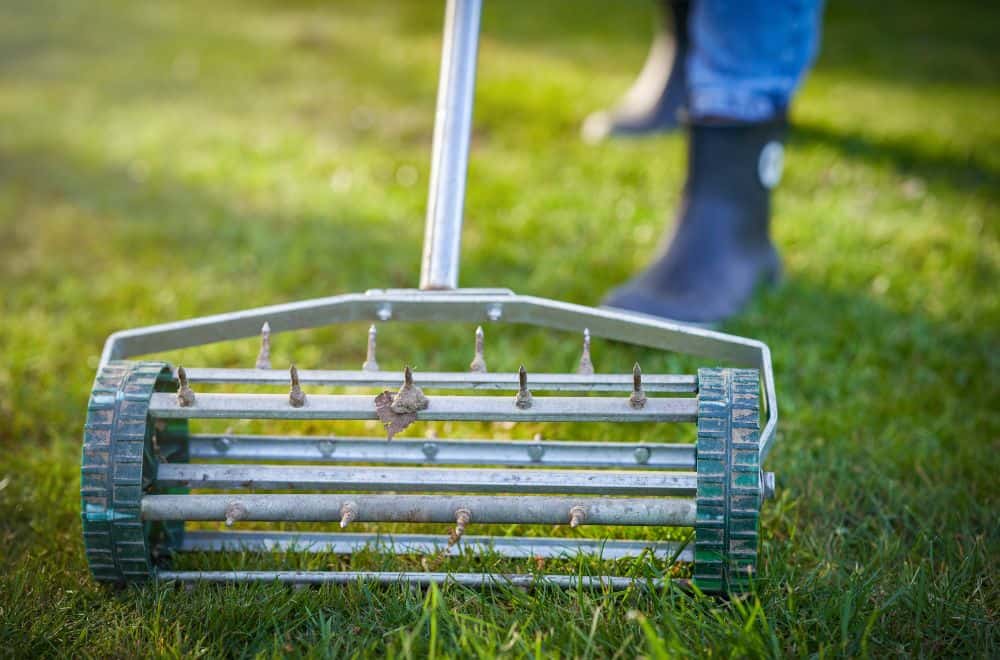
Hard, compacted soil does not have any space for air and water, which grass needs to germinate. Before planting grass seed on hard dirt, you want to prepare the soil to ensure that it can support plant life.
Start by aerating the ground. The easiest way to do this is by using a core aerator, which you can rent from your local gardening store. A core aerator has narrow spines that will dig small holes in your yard, allowing airflow in the soil.
The holes also help the soil to retain enough water for the germination of the grass seeds. We recommend that you check out this tutorial for best practices on aerating your lawn.
Step 2: Till the soil
Tilling involves breaking the soil, turning it over, and mixing in some organic matter. To make the task easier, use a rototiller to dig out the soil 10 to 12 inches deep. This is an excellent depth to ensure that the grassroots can push through the soil and establish.
Before tilling, be sure to remove all debris that may be on top of the ground. A basic rake should help to get this job done. After breaking up and overturning the soil, allow it to dry for two to three days. Then, apply about 3 to 4 inches of compost and mix it in with the soil.
Finally, use the back of a hand rake to level out the soil before planting the grass seed.
Pro Tip: Compost helps to loosen and aerate the soil. Healthy soil that can support plant life contains air, minerals, and organic matter. The chances are good that the hard dirt in your yard has been stripped of essential organic matter. Fortunately, you can enrich the soil by applying compost. This will provide fertile ground for grass seeds to flourish.
Step 3: Plant the Grass Seed
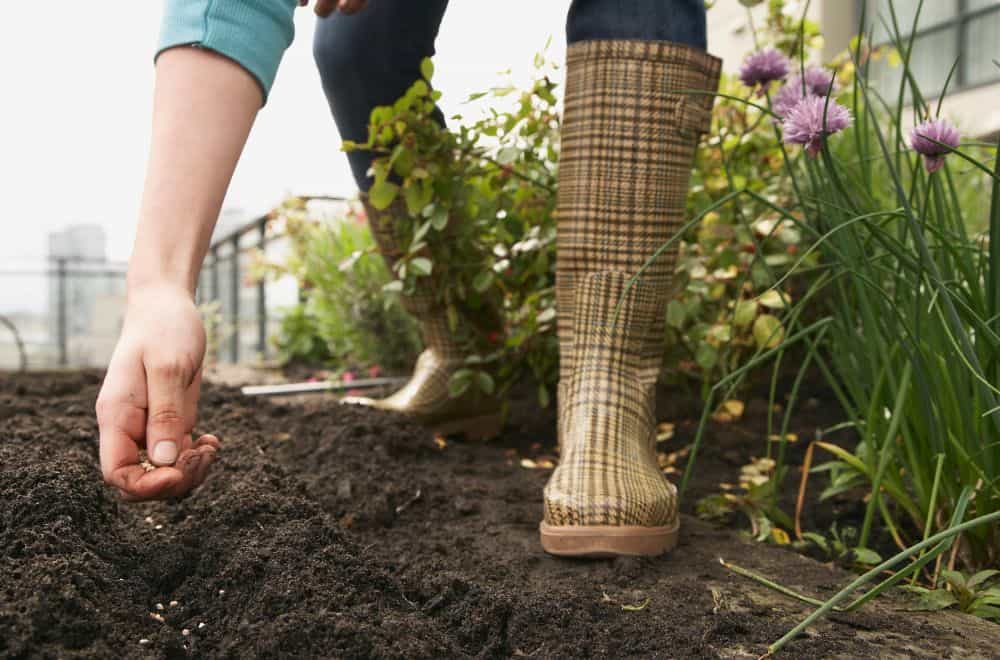
Once the soil is loose, well-aerated, and healthy, you can now plant grass seed. You should never sprinkle grass seeds over hard, unprepared soil. Most of the seeds will not grow, and those that do will leave you with a patchy lawn. Not to mention that this is a waste of precious grass seeds.
The importance of choosing good quality grass seed cannot be overstated. When selecting seed, keep in mind your area’s climate and for what you plan to use your yard.
For example, if you live in a warm region, opt for warm-season grass seeds such as Bermudagrass, Zoysia, or Bentgrass. Good cool-season grasses for colder regions include Kentucky bluegrass, Tall Fescue, and Perennial Ryegrass.
Some lawn owners prefer to plant one type of grass, but mixing various grass seeds is not bad. With hybrid grass seeds, you are sure that at least a good amount of seeds will flourish in your lawn.
After selecting the best grass seed for your lawn, it is now time to plant. Sprinkle grass seed all over your lawn, covering the edges and the core. Here is a helpful video tutorial on how best to lay grass seed in your lawn
After spreading the seeds, use a rake to mix the soil with the seed. For proper germination and the lawn to establish, the seeds need to contact the soil as much as possible.
After mixing the soil with the seeds, we recommend applying a layer of topsoil compost measuring about 1 inch. Covering the seeds with compost increases contact with soil, protects against erosion and keeps the soil aerated, warm, and moist. These are the perfect conditions for grass seeds to germinate.
Pro Tip: Buy your seeds from a trusted vendor. Good seed is expensive, but it will save you plenty of time and effort.
Step 4: Water the Yard
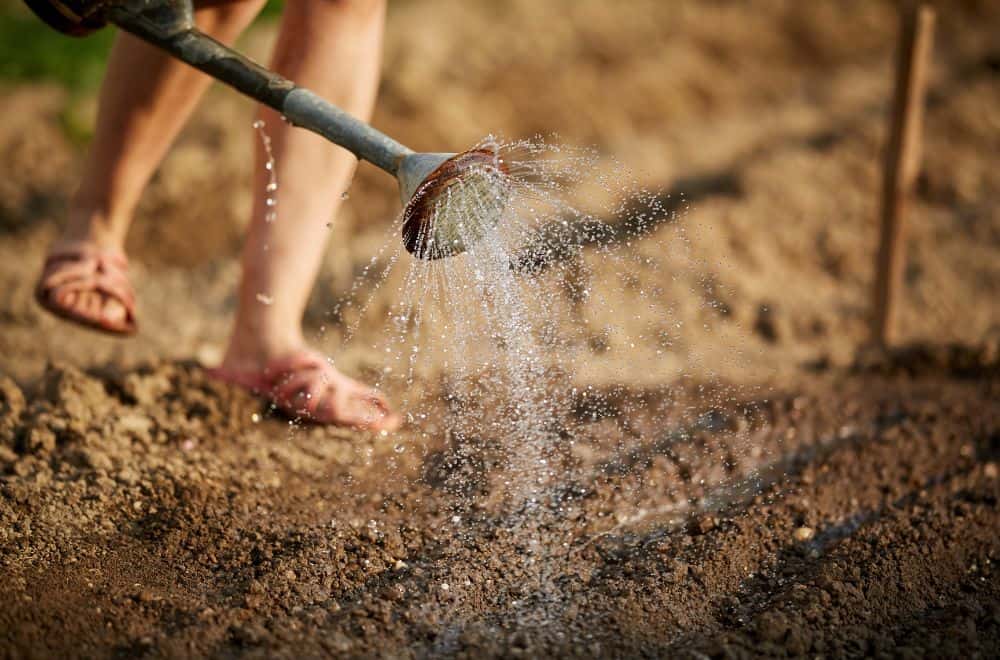
When it comes to starting a new lawn on hard dirt, watering is practically a matter of life and death. Insufficient watering will keep the grass seeds from sprouting or cause the seedlings to die a quick death.
Too much water, on the other hand, can discourage the grass from growing deeper roots. Shallow roots make for an unstable lawn and cannot tap the water and nutrients deep in the soil.
It would be best if you water your yard as soon as you finish planting the grass seeds.
Light watering is enough to keep the soil moist and aerated. After this, you should water the yard several times a day every day. Ideally, the top one inch of soil should stay moist to ensure proper seed germination.
After the seeds germinate, ensure that the top 2 to 3 inches of soil are adequately moist. At this point, you can minimize your water frequency to 2 or 3 times a week. The best time to water your new lawn is mid-morning when the sun is pleasantly warm but not scorching. This keeps the water from evaporating and ensures that the soil absorbs as much moisture as possible.
By watering two to three times, the soil will have about 4 to 6 inches of water, which is good enough for the plant’s growth and development. When the lawn is established, the goal is to water infrequently but deeply to encourage deep root growth.
Ensure That Your Grass Seed Grows on Hard Dirt
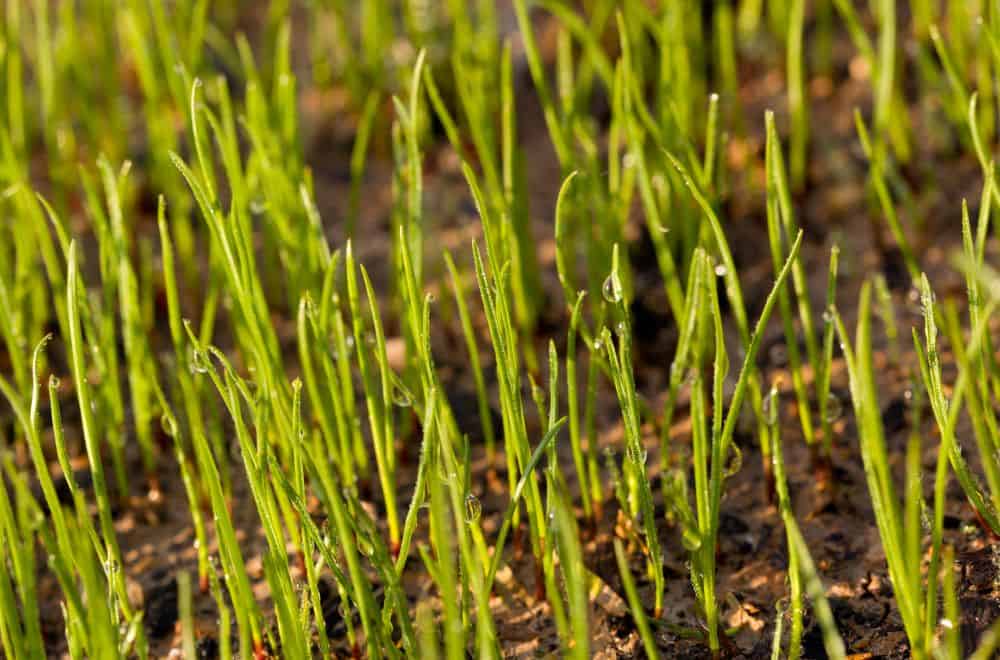
After planting your grass seeds, the work of growing out your lawn doesn’t end here. Proper lawn care will make all the difference as to whether or not your newly planted grass seeds will thrive.
Keep these things in mind for your lawn to flourish:
Temperature
Grass, like any other plant, requires the ideal temperatures to flourish. If you live in the south, the best temperatures to grow warm-season grass are between 80 and 96 degrees Fahrenheit. For cool-season grasses, the ideal temperatures are between 50 and 65 degrees Fahrenheit.
Timing
Planting your grass seed during the grass’s peak growth period ensures that the seeds germinate faster and the lawn establishes quicker. Ideally, you should plant cool-season grass seeds in fall when the soil is still warm from the summer heat, the day temperatures are mild, and nights are cool.
Late spring to early summer is the best time to plant warm-season grass seeds. At this time, there is the advantage of light, predictable rainfall, and warm soil, which is ideal for lawn growth and establishment.
Shade
Some grass types require full exposure to sunlight to flourish, while others thrive in yards with moderate to complete shade. Assess the shade situation where you want to plant the seeds and buy the compatible grass seeds. Too much or too little shade will slow down the germination process. Exposing the planted grass seed to just enough sunlight will promote rapid germination and soil establishment.
Extended Tips
- If you are dealing with hard, compacted soil, there might be other problems that need to be addressed before planting grass seeds. Consider doing a simple soil test. Collect a few samples and bring them to your local gardening center for testing.
- Practice proper lawn mowing. You can start to mow your new grass when the blades are 3 to 6 inches long. However, you should not mow more than 1/3 of the grass blades in a single mowing session. Overmowing will hurt the new grass, which can lead to long-term problems such as unwanted browning.
- Follow the proper feeding routine. You can start to feed the grass two to four weeks after planting. If you mixed some fertilizer into the soil before planting, you could apply another layer of fertilizer 6 to 8 weeks after planting the seed.
- Try to aerate your soil at least two times a year to minimize the chances of compaction.
Hard Dirt is Not Ideal, But Your Dream Lawn Is Still Possible
Planting grass is usually as simple as spreading the seeds in your lawn and waiting for them to germinate. However, when you are facing hard, dry soil, that’s a different ball game.
To plant grass seed on hard dirt, you will need to take your time to prepare the soil using the steps we have outlined for you. Be sure to invest in high-quality seeds and to plant during the grass’s particular peak growth season.
All the best in growing your new lawn!
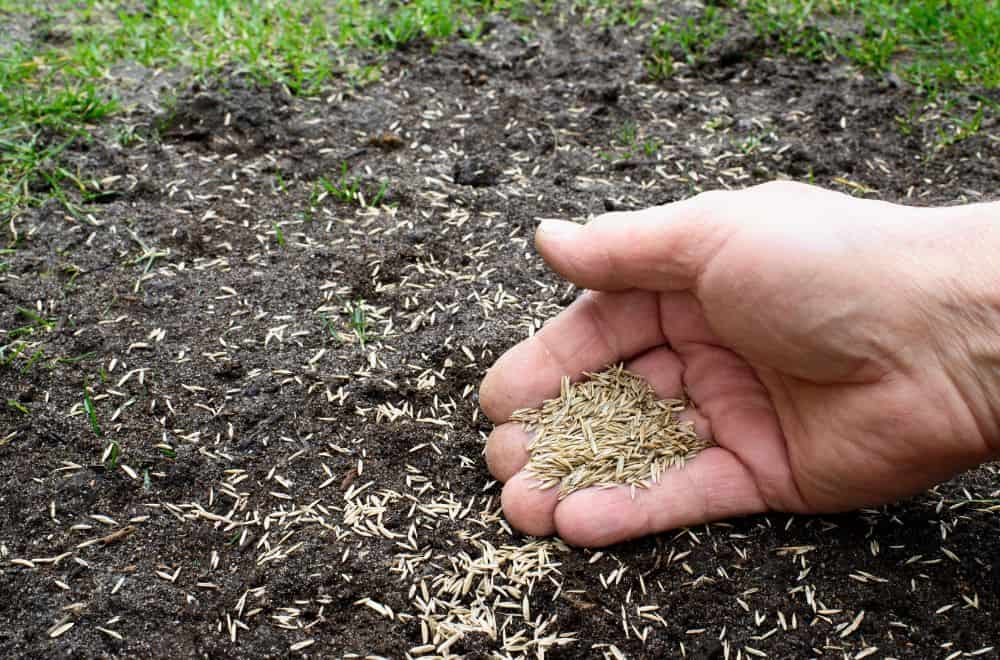
Leave a comment